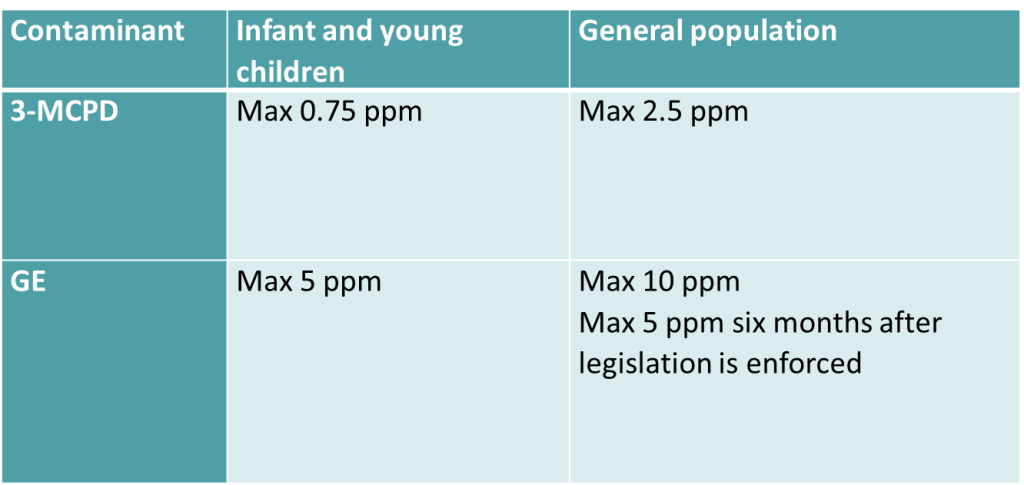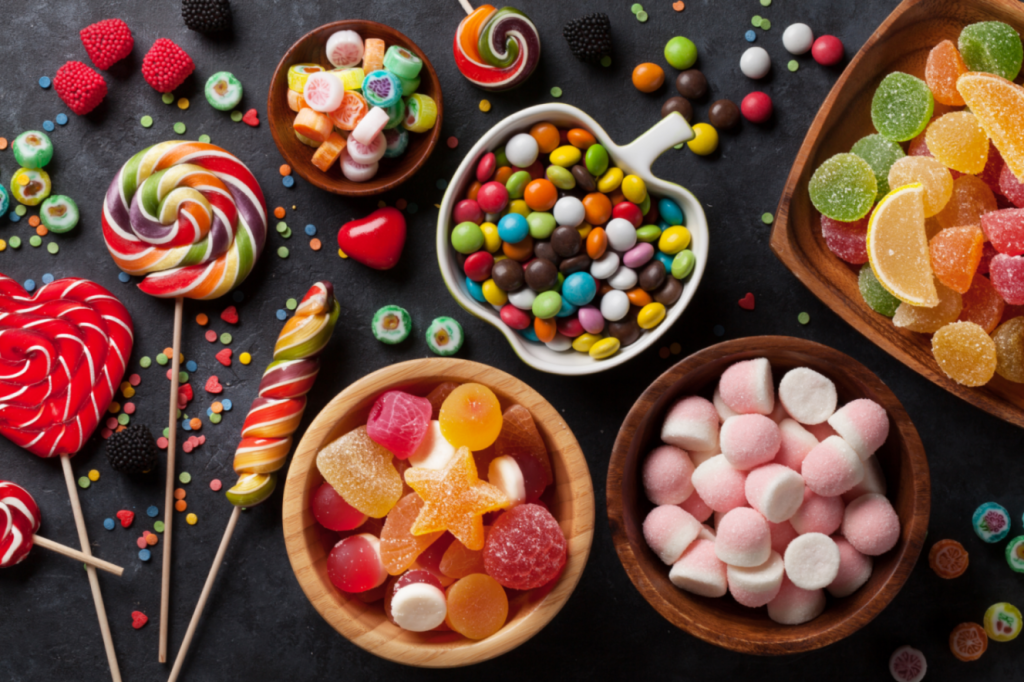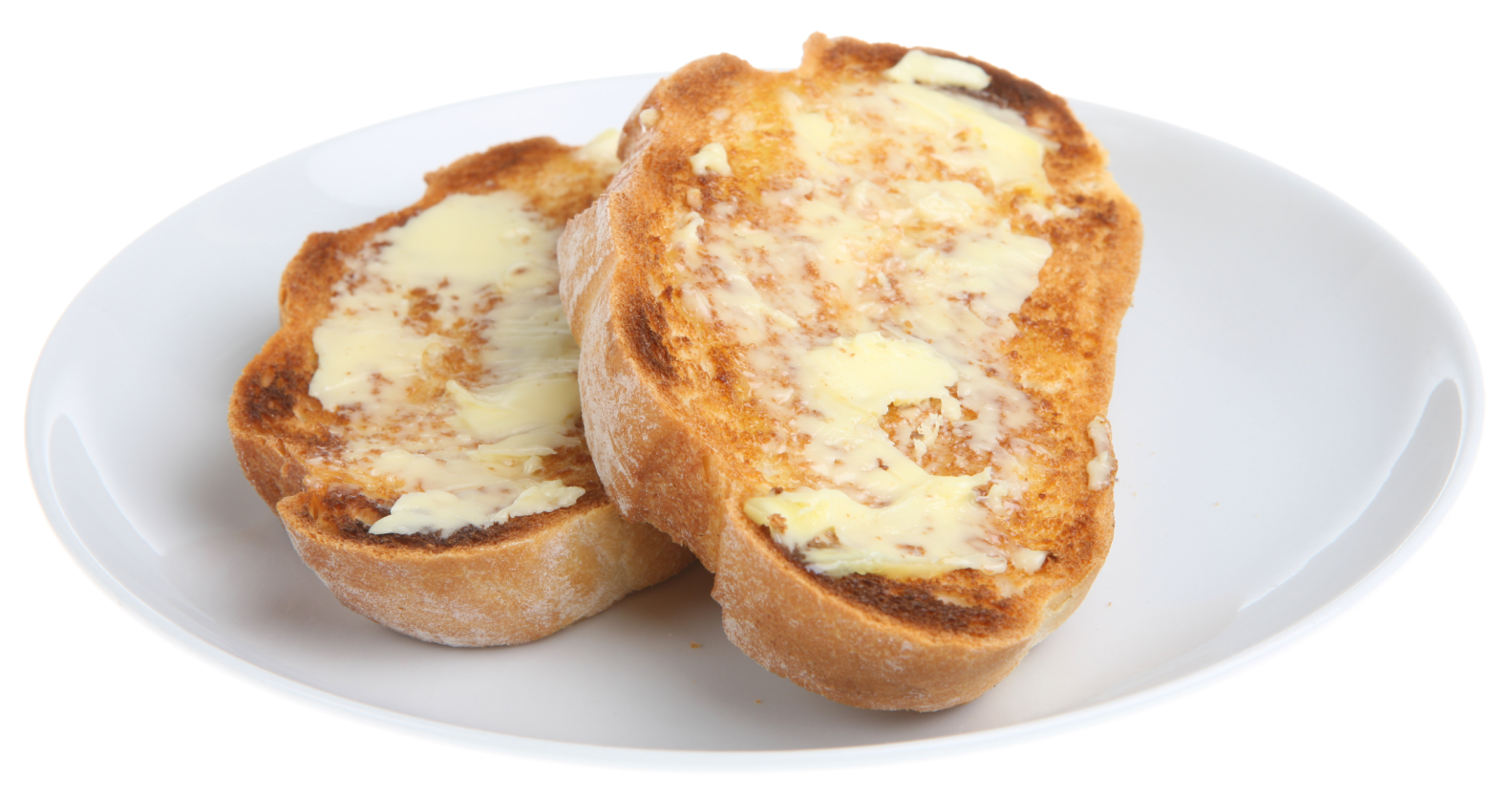The European legislation for Emulsifier E 471 (mono- and diglycerides of fatty acids) will be amended by the European Commission after recommendations by the European Food Safety Authorisation (EFSA). The updated specification for E 471 will be extended with additional contaminants commonly found in emulsifiers, i.e., Glycidyl Esters (GE) and 3-monochloropropanediol (3-MCPD).
Mono- and diglycerides are used across a range of F&B applications, e.g., bread, dairy, margarine, dressings, chocolate, ice cream and confectionery, to name the main ones.

In EFSA’s initial request for information, they called for more data regarding potential contaminants in E 471 (such as trans fatty acids, heavy metals, erucic acid, butanetriols and acrolein). Food emulsifier producers specify these analytical results and the lowest technically achievable levels of 3-MCPD and Glycidyl Esters in E 471. Up until now, these were not included in the specification for E 471.
After the EFSA’s call for data for E 471, European emulsifier producers worked together to define maximum technical achievable levels of those contaminants and submitted their findings to EFSA in December 2020. The European Commission included only the contaminants heavy metals, 3-MCPD and GE in the revised specification (the other earlier mentioned contaminants were not included). The revised specification received a favourable opinion from the EU member states on the March 8, 2023. As such, the proposed specification is expected to be adopted and the legislation to be enforced by mid-summer of this year. The draft specification includes a six-month transition period for both E 471 itself and food containing E 471.
The upcoming legislation for the additional contaminants is specified as per below:

What you need to know as a food and beverage manufacturer:
The E 471 emulsifier industry is responsible for meeting this new legislation and deliver compliant E 471 into the market. It may be expected as responsible producers to ensure customers/F&B manufacturers are kept informed of current proceedings. In addition, according to the new legislation, E 471-containing food products produced outside Europe but exported into Europe must adhere to the updated E 471 standard.

Background
The use of food additives (E-numbers) within the EU is governed by strict rules and regulations. Each E-number has undergone a stringent safety evaluation by the European Food Safety Authority (EFSA), and when found safe for use has been authorised by the European Commission. EFSA periodically revises specifications of E-numbers, at which point they are re-evaluated in risk assessments.
In November 2018, EFSA launched a public call for technical and toxicological data on food additive E 471 (mono- and diglycerides of fatty acids). EFSA recommended adapting the current specifications for mono- and diglycerides of fatty acids (E 471), in particular by reducing the maximum allowable limits for toxic elements of safety concern and including two new contaminants.
All European food emulsifier producers are members of the non-profit industry organisation EFEMA (European Food Emulsifier Manufacturers Association), and worked together as responsible producers to prepare the required documentation to address this request from EFSA.

Click on each to navigate to that part of the page.
-
- Why are 3-MCPD and glycidol esters (GE) considered contaminants?
- What are 3-MCPD and GE and how are they formed?
- What is the source of 3-MCPD and GE in food emulsifiers, E 471?
- Have E 471 manufacturers developed effective mitigation techniques?
- Analytical method for 3-MCPD and GE
- What are the new levels proposed as part of this legislation and when will it come into effect?
Why are 3-MCPD and glycidyl esters (GE) considered contaminants?
3-MCPD is a Group 2B IARC “possible” human carcinogen and thus may cause cancer, and could also pose risks to kidney function and the male reproductive system [1][2].
Glycidyl esters are classified as genotoxic and are a Group 2A “probable” human carcinogen [3][4].
What are 3-MCPD and GE and how are they formed?
3-MCPD esters and GE are predominantly formed during the refining process of vegetable oils in the deodorisation step that involves very high temperatures up to 230oC. The formation of these contaminates is also related to food with high fat content that have undergone thermal processing (e.g., frying and baking) [5][6][7].
What is the source of 3-MCPD and GE in food emulsifiers, E 471?
Several studies have shown that mono- and diglycerides (E 471) are precursors for the formation of GE in oils and fats [5][6][7] and thus GE is an unavoidable byproduct in the production process of E 471. The formation of GE is increased with concentration of mono- and diglycerides, and with temperatures above 220°C [8]. Apart from mono- and diglyceride concentration and high temperatures, the formation of GE is also influenced by other parameters, such as the oil source and the fatty acid composition. For example, mono- and diglyceride from unsaturated oils and fats can have higher levels of GE than fully hydrogenated fat-based products. In addition, processing conditions (i.e., processing time, catalysts, steam, vacuum and mixing) can influence the final concentration.

3-MCPD is neither formed nor removed in the manufacturing process of E 471. Formation of 3-MCPD requires chlorine, which is not present in the manufacturing process for E 471. As such, the 3-MCPD level in E 471 is introduced only via the raw materials sourced and used in the manufacturing process of E 471.
|
Get KHNI articles delivered to your inbox
|
Have E 471 manufacturers developed effective mitigation techniques?
Over the last several years, EFEMA members have carried out extensive research and development work to thoroughly understand the chemical pathways and conditions affecting the formation and degradation of GE.
GE is formed at high temperatures, but, at the same time, GE is also an unstable epoxide at high temperatures. Mitigation involves a controlled heat treatment of the reaction mixture after formation of mono-and diglycerides and the associated, unwanted GE by-product. The mitigation technique requires the installation of specialised equipment. A significant part of the mitigation process has already been completed by European producers, and a large proportion of E 471 efforts are focused on meeting the upcoming legislation of maximally allowed 10 ppm. Mitigation implementation and further process optimisation are ongoing to be able to enable the tighter specification of max 5 ppm GE to be in place six months after the legislation comes into force.
Analytical method for 3-MCPD and glycidyl esters
No accurate analytical method existed for E 471 when the initial EFSA call for data on GE and 3-MCPD was requested in 2018. The available and published methods—the AOCS 29a-c methods—did not give reliable results for food emulsifiers.
EFEMA has worked for over two years with the SGS Germany laboratory on the development of an appropriate and reliable method for the measurement of 3-MCPD, 3-MCPD esters and GE in emulsifiers. A method based on a modification of the AOCS Official Method Cd 29b-13 with gas chromatography–mass spectrometry (GC/MS) has been developed for E 471.

The method has been validated by an internal ring test among EFEMA members and was released in summer 2020 by EFEMA. Dr. Jan Kuhlmann of SGS published the method in October 2021 [9]. The analytical method is highly laborious, requires specific equipment and demands a significant investment. In addition, the method is not yet validated by the EU reference laboratory and is still in the process of achieving proper validation.
EFEMA is aware that the National Food Institute at Technical University of Denmark (DTU Food), which hosts the European Union Reference Laboratory (EURL) for processing contaminants, has worked on a validation study of the method.
What are the new levels proposed as part of this legislation and when will it come into effect?

To ensure a minimal impact on end customers, the European Commission has proposed transitional measures for dealing with products containing E 471, and for E 471 itself.
These transition periods permit producers to use E 471 with GE above 10 ppm if the E 471 was produced prior to the regulation coming into force. The food that contains the E 471 with GE above 10 ppm may be marketed until the use-by date.
Additionally, E 471 with GE above 5 ppm and below 10 ppm that has been manufactured after the regulation has come into force may be used by producers until the exhaustion of stocks. Similar to the 10 ppm transition rules listed above, food containing this E 471 may be marketed until the use-by date.
The proposed specifications and transitional measures are as follows:

Contributors:
-
Glossary
EFEMA
In 1974, producers of food emulsifiers in Europe founded an association called the Food Emulsifiers Manufacturers Association (EFEMA) to support and promote the general scientific, economic and technical interests of European producers of food emulsifiers. Members include BASF, IFF, Kerry, Lasenor, Oleon, Palsgaard and Puratos.
EFSA – European Food Safety Authority
EC– European Commission
GE – Glycidyl Ester
3-MCPD – 3-monochloropropane diol
-
References
[2] EFSA Panel on Contaminants in the Food Chain (CONTAM), EFSA Journal, Update of the risk assessment on 3-monochloropropanediol and its fatty acid esters, 21 November 2017.
[3] WHO | JECFA
[4] Process contaminants in vegetable oils and foods | EFSA (europa.eu)
[5] Shimizu, M., Vosmann, K. and Matthäus, B., 2012. Generation of 3‐monochloro‐1, 2‐propanediol and related materials from tri‐, di‐, and monoolein at deodorization temperature. European Journal of Lipid Science and Technology, 114(11), pp. 1268–1273.
[6] Freudenstein, A., Weking, J. and Matthäus, B., 2013. Influence of precursors on the formation of 3‐MCPD and glycidyl esters in a model oil under simulated deodorization conditions. European Journal of Lipid Science and Technology, 115(3), pp. 286–294.
[7] Albuquerque, T.G., Costa, H.S., Silva, M.A. and Oliveira, M.B.P., 2020. Are chloropropanols and glycidyl fatty acid esters a matter of concern in palm oil? Trends in Food Science & Technology, 105, pp. 494–514.
[8] Shimizu, M., Weitkamp, P., Vosmann, K. and Matthäus, B., 2013. Temperature dependency when generating glycidyl and 3-MCPD esters from diolein. Journal of the American Oil Chemists’ Society, 90(10), pp. 1449–1454.
[9] Jan Kuhlmann — Collaborative study for the quantification of total contents of 2- and 3-monochloropropanediol and glycidol in food emulsifiers by GC–MS AOCS, 98,12, Dec 2021, p1131-1142)

 Liz Lalor, BSc is currently a Global Marketing Manager for Kerry’s Applied Health and Nutrition team. She has a strong passion for sustainability and seeking out ways to help produce nutritious food that is kinder to the environment, people, and communities around the world. She holds a Bachelor’s Degree in Pharmacology from the National University of Ireland, Galway.
Liz Lalor, BSc is currently a Global Marketing Manager for Kerry’s Applied Health and Nutrition team. She has a strong passion for sustainability and seeking out ways to help produce nutritious food that is kinder to the environment, people, and communities around the world. She holds a Bachelor’s Degree in Pharmacology from the National University of Ireland, Galway.  Ross Munro is Regulatory Senior Scientist for Emulsifiers and Texture Systems at Kerry. He has been with Kerry for 4 years and has a total of 6 years in the food and beverage industry. He has Bachelor’s Degree in Food Innovation from Technological University Dublin.
Ross Munro is Regulatory Senior Scientist for Emulsifiers and Texture Systems at Kerry. He has been with Kerry for 4 years and has a total of 6 years in the food and beverage industry. He has Bachelor’s Degree in Food Innovation from Technological University Dublin.  Margreth Wegman is Global R&D Director for Emulsifiers, Texture Systems and Gum Acacia at Kerry. She has 20+ years’ experience working with in particular emulsifiers from manufacturing, application as well as business perspective. She is also the President of the board of EFEMA. Margreth holds an MSc in Chemistry and a PhD on enzymatic conversions of beta-lactam antibiotics at the Delft University in the Netherlands.
Margreth Wegman is Global R&D Director for Emulsifiers, Texture Systems and Gum Acacia at Kerry. She has 20+ years’ experience working with in particular emulsifiers from manufacturing, application as well as business perspective. She is also the President of the board of EFEMA. Margreth holds an MSc in Chemistry and a PhD on enzymatic conversions of beta-lactam antibiotics at the Delft University in the Netherlands. 